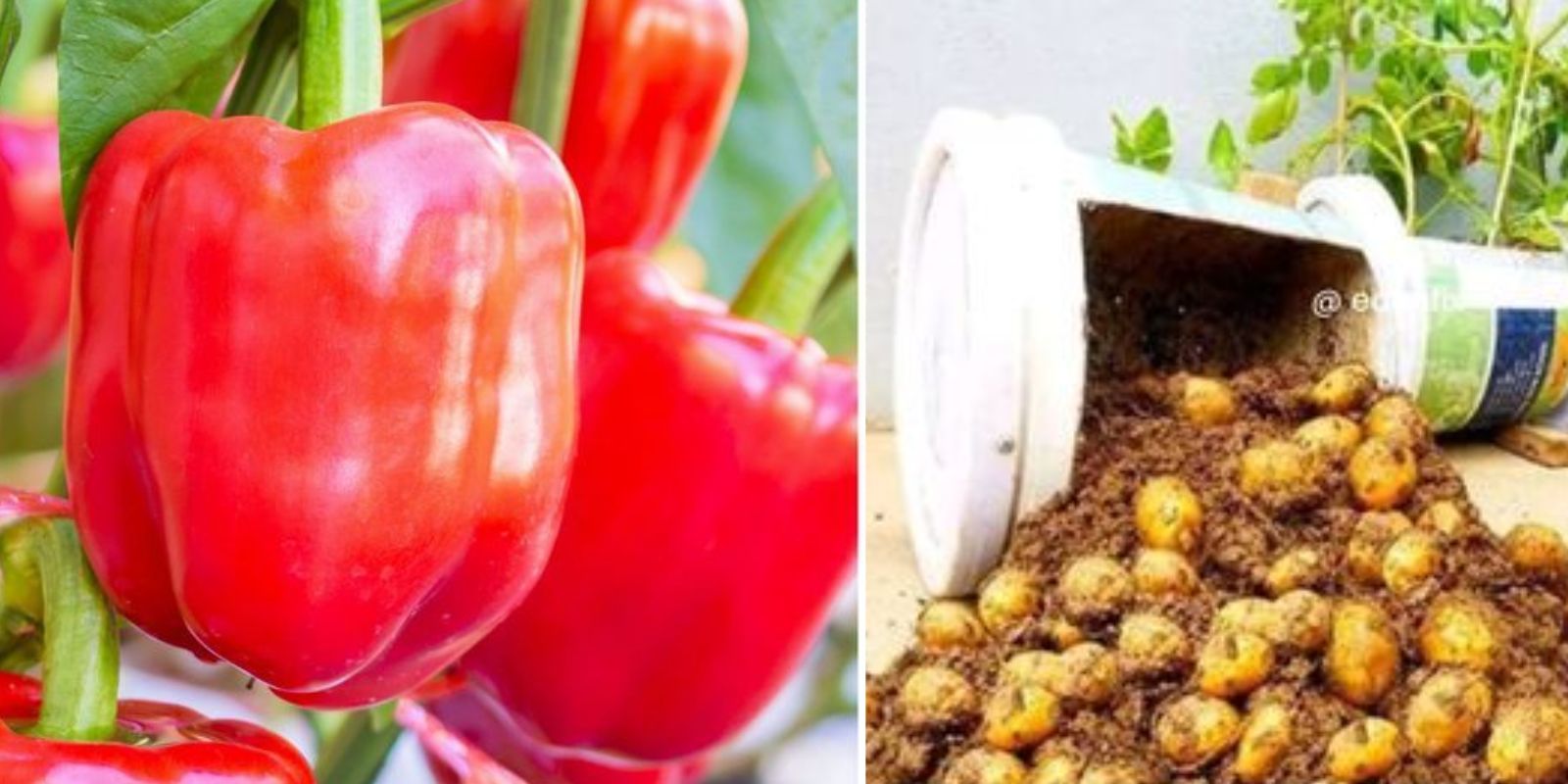Introduction
Gardening is a delightful and rewarding activity that can be both productive and creative. Imagine growing two different crops—potatoes and peppers—in the same container, maximizing your space and yield. This innovative gardening technique, which allows you to cultivate potatoes and peppers together, is not only efficient but also surprisingly easy to implement. This article will guide you through the steps to successfully grow these two vegetables in one container, providing you with tips and insights to help you achieve a bountiful harvest.
Why Grow Potatoes and Peppers Together?
Growing potatoes and peppers together offers several benefits:
- Space Efficiency: This method is perfect for gardeners with limited space, such as those in urban areas or with small balconies.
- Companion Planting: Potatoes and peppers can complement each other, potentially enhancing growth and pest resistance.
- Maximized Yield: By growing two crops in one container, you can make the most of your gardening efforts and resources.
- Fun and Innovative: This technique adds an element of fun and innovation to your gardening routine, making it an enjoyable challenge.
Steps to Grow Potatoes and Peppers Together
1. Choose a Large Container
To successfully grow potatoes and peppers together, you need a large container that can accommodate both crops.
- Size and Depth: Select a container that is at least 18-24 inches deep and wide. This ensures there is enough space for the potato tubers to grow underground and for the pepper plants to thrive above ground.
- Drainage: Make sure the container has good drainage to prevent waterlogging, which can lead to root rot.
2. Layer Soil and Potatoes
Creating the right environment for your potatoes to grow is the first step.
- Soil Preparation: Use a high-quality potting mix that is well-draining and rich in organic matter. Potatoes need loose, fertile soil to develop properly.
- Layering: Fill the bottom of the container with about 4-6 inches of soil. Place seed potatoes on top of this layer, spacing them evenly. Cover the potatoes with another layer of soil, about 3-4 inches deep.
3. Plant Pepper Seedlings
Once your potatoes begin to sprout, it’s time to introduce the pepper plants.
- Timing: Wait until the potato plants have sprouted and are a few inches tall. This ensures that the potatoes are established and won’t be disturbed by the planting of the peppers.
- Planting: Plant pepper seedlings around the edge of the container. Be careful not to damage the potato sprouts. The peppers will grow above ground, while the potatoes continue to develop below.
4. Water Regularly
Both potatoes and peppers require consistent moisture, but overwatering can be detrimental.
- Watering Schedule: Water the container regularly to keep the soil moist but not soggy. The frequency will depend on your climate and weather conditions. In hot, dry climates, you may need to water daily, while in cooler climates, watering every few days might suffice.
- Check Moisture Levels: Use your finger to check the soil moisture. If the top inch of soil feels dry, it’s time to water.
5. Fertilize Appropriately
Feeding your plants with the right nutrients is crucial for a healthy, productive garden.
- Balanced Fertilizer: Use a balanced, water-soluble fertilizer that provides essential nutrients like nitrogen, phosphorus, and potassium. Follow the manufacturer’s instructions for application rates and frequency.
- Organic Options: Consider using compost or organic fertilizers to enrich the soil naturally. This can improve soil health and plant growth.
6. Harvest in Stages
The beauty of this method is that you can harvest your crops in stages, ensuring a continuous supply of fresh produce.
- Peppers First: Peppers generally mature faster than potatoes. Harvest the peppers when they reach the desired size and color. Use sharp scissors or pruning shears to cut the peppers from the plant, avoiding damage to the stems.
- Potatoes Next: Once you’ve harvested the peppers and the potato plants begin to yellow and die back, it’s time to harvest the potatoes. Carefully dig through the soil to find the mature tubers. Be gentle to avoid damaging the potatoes.
Tips for Success
- Variety Selection: Choose potato and pepper varieties that are suitable for container gardening. Compact or bush varieties of both crops will perform better in confined spaces.
- Sunlight: Ensure the container receives at least 6-8 hours of sunlight daily. Both potatoes and peppers thrive in full sun.
- Pest Management: Keep an eye out for common pests like aphids, beetles, and caterpillars. Use organic pest control methods, such as neem oil or insecticidal soap, to protect your plants.
- Mulching: Add a layer of mulch on top of the soil to retain moisture and suppress weeds. Straw, grass clippings, or compost can be used as mulch.
- Regular Monitoring: Check your plants regularly for signs of stress, disease, or nutrient deficiencies. Early detection and intervention can prevent major problems.
Common Challenges and Solutions
- Watering Issues: Overwatering can lead to root rot, while underwatering can stress the plants. Maintain consistent moisture and ensure good drainage.
- Nutrient Deficiencies: Yellowing leaves can indicate nutrient deficiencies. Address this by fertilizing appropriately and amending the soil with compost or organic matter.
- Pest Infestations: Common pests can be managed with regular monitoring and organic treatments. Introducing beneficial insects like ladybugs can also help control pest populations.
Conclusion
Growing potatoes and peppers together in the same container is an innovative and space-efficient gardening technique. By following the steps outlined in this guide, you can enjoy a high yield of both crops, even if you don’t have a traditional garden. This method not only maximizes your space but also adds a fun and rewarding challenge to your gardening routine.
Motivation
Are you ready to try this exciting two-in-one gardening technique? Follow these steps and share your experiences with us—let’s cultivate potatoes and peppers together and enjoy the surprising benefits of this innovative method! Happy gardening!

